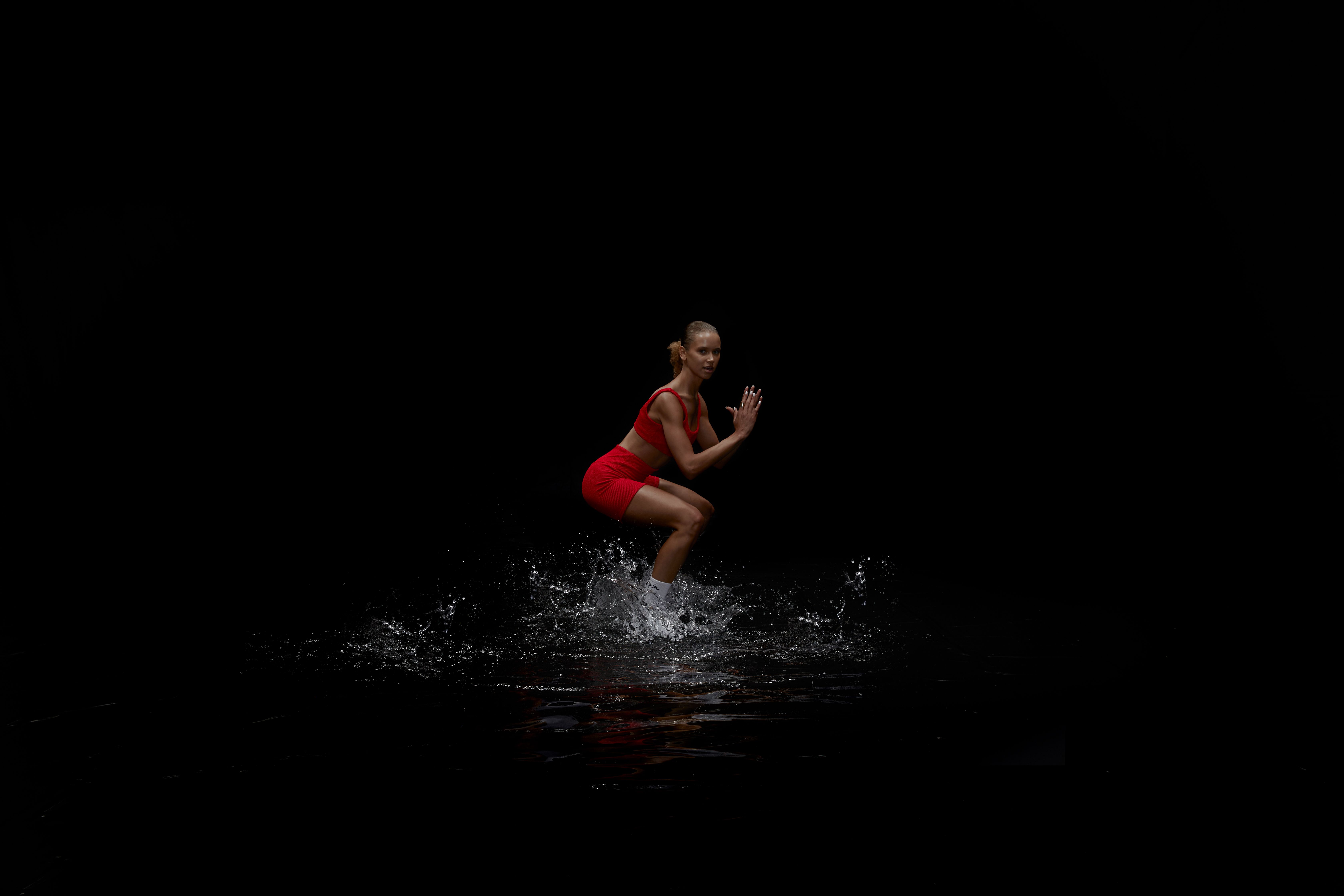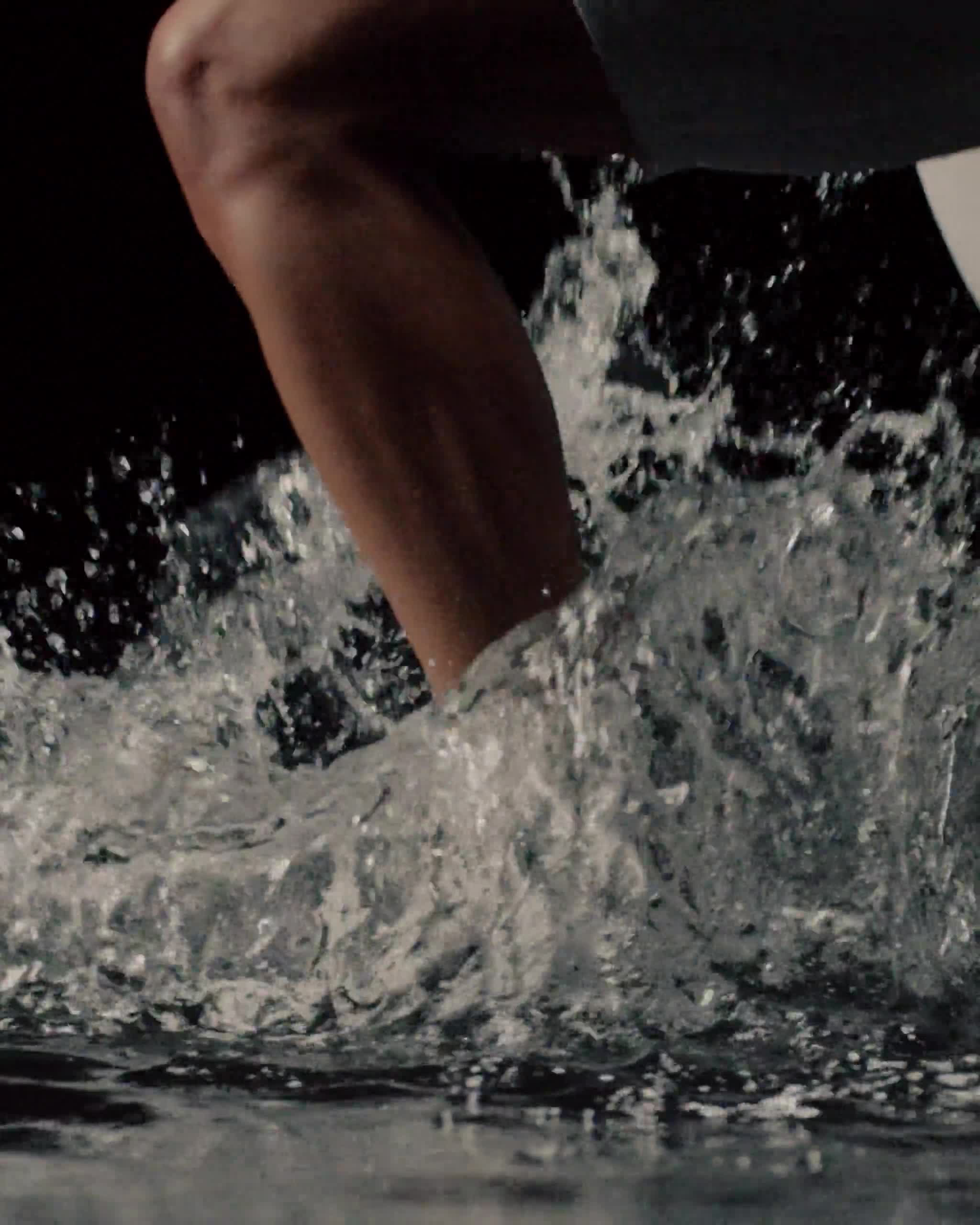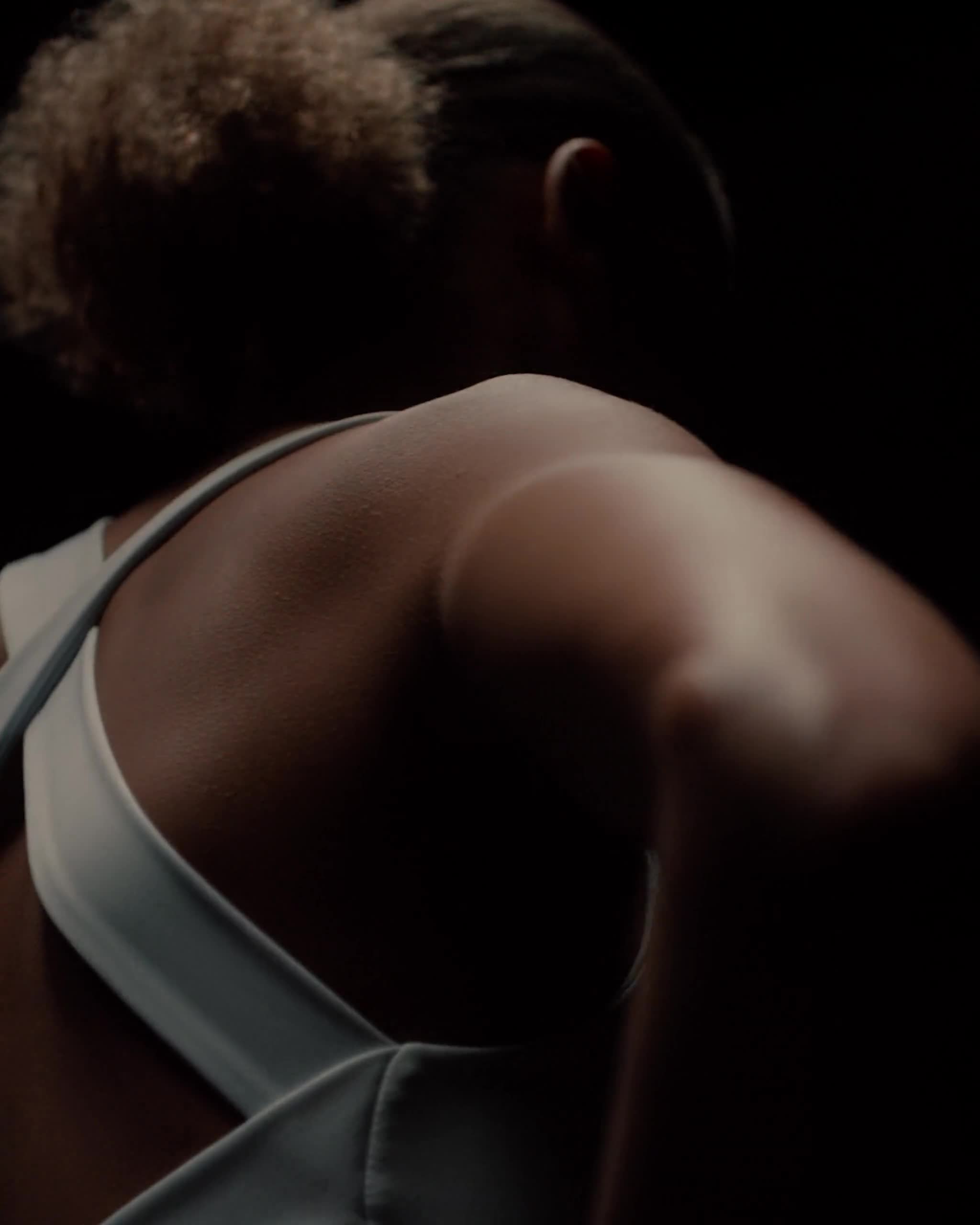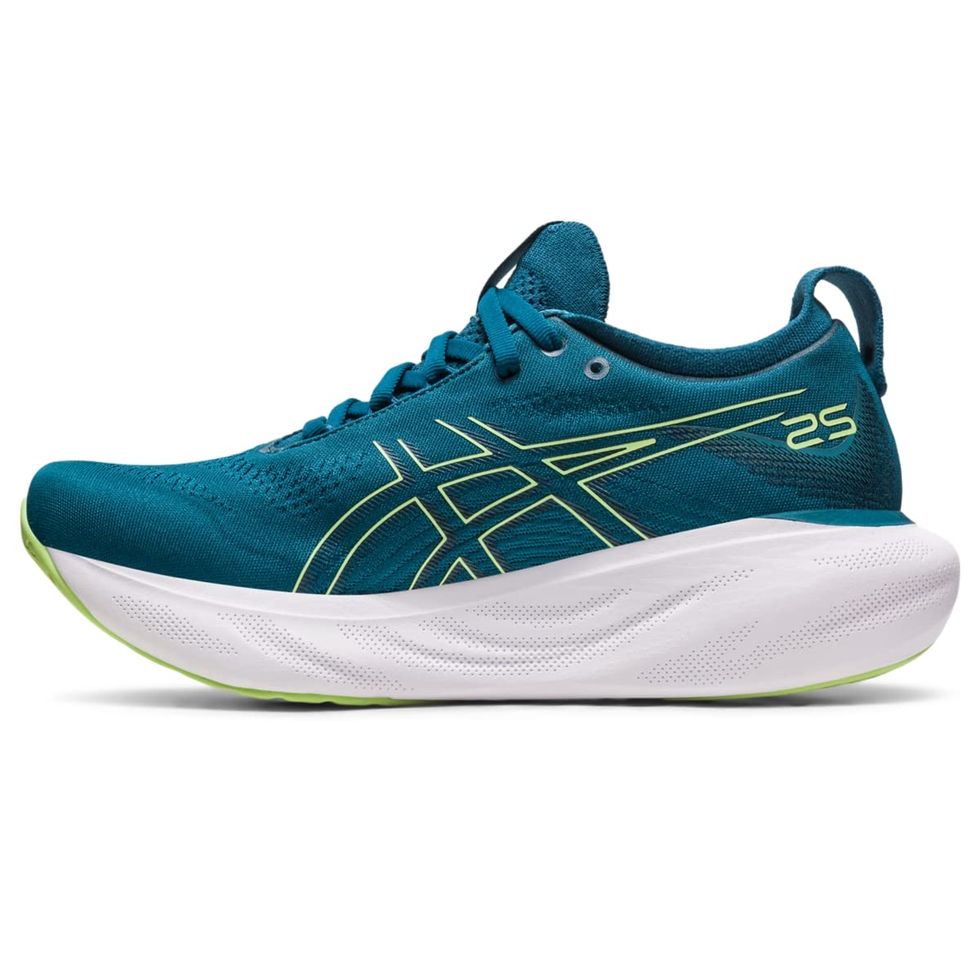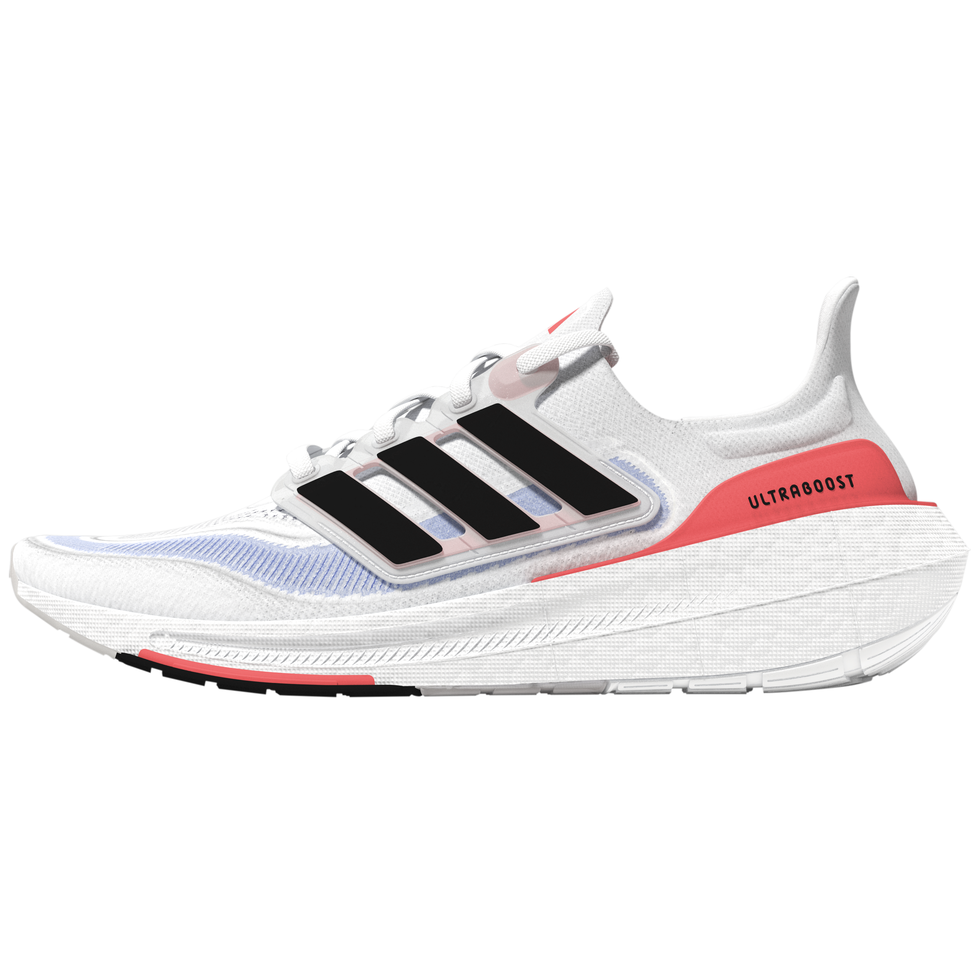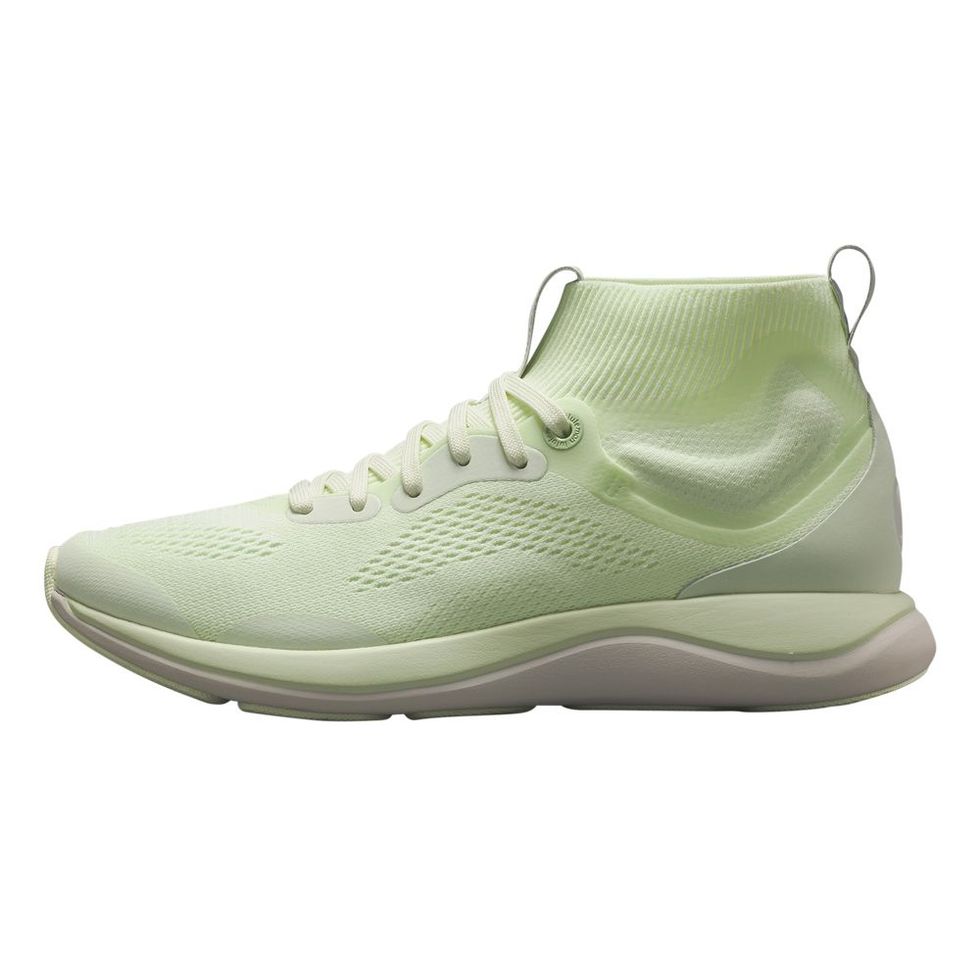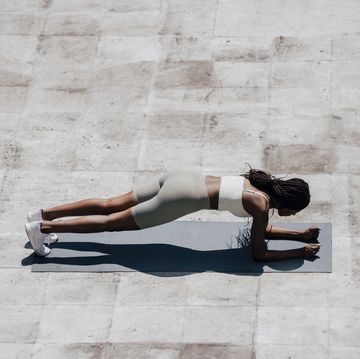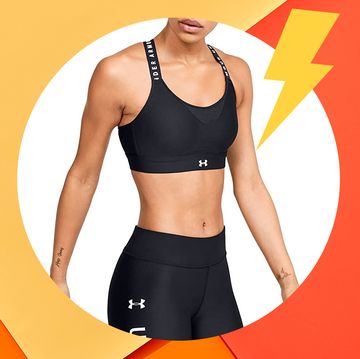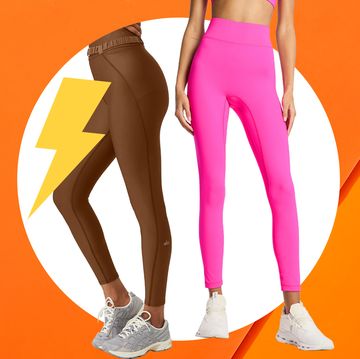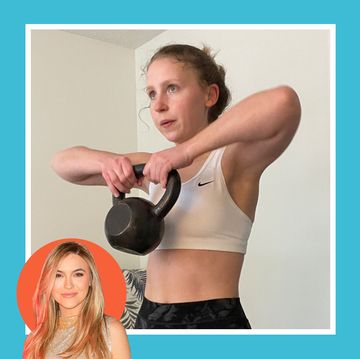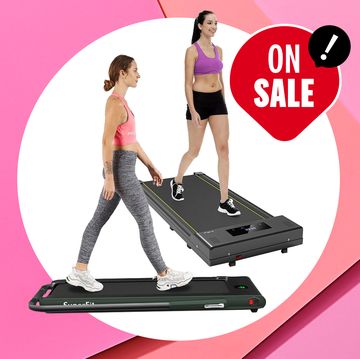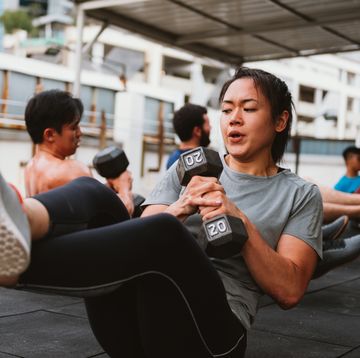When her five-day-a-week weightlifting routine at the gym got derailed circa 2020 (been there, felt that…), physical therapist Kristi Barker headed to her living room like the rest of us. Here’s the twist: She wanted an exercise alternative that made her feel as good mentally as it did physically. So Barker turned to high-impact moves that gave her a serious endorphin rush in addition to checking the boxes of being doable in a small space, fun, mostly equipment-free, and not super time-consuming. Fast-forward three years (how?!), and experts are still urging you to make force-focused workouts a staple of your routine.
If you’re picturing dreaded burpees after reading “high-impact exercise,” you wouldn’t be incorrect, but you would be narrow-minded (no offense!). “The term ‘impact’ implies two forces coming into contact with each other, so technically, any exercise that involves such an interaction would be considered high-impact,” says Brad Shoenfeld, PhD, a professor in exercise science at Lehman College, City University of New York. That includes activities like jump squats and jumping rope, but also jogging or high-energy dancing. And despite what many everyday athletes have been led to believe, it’s an *amazing* thing for the body and brain.
Unfortunately, “there’s a stigma around high-impact training,” says Barker—one that paints it as harmful for your joints and beyond. The solve here is education around its gains as well as insights into how to incorporate it into your routine, Barker says. We’re here to help.
How These Workouts Got A Questionable Rep
FYI: There is no bottom-line scientific study that revealed high-impact exercise is bad for joints and a recipe for pain. But exercise that feels uncomfortable or even painful at times when performed incorrectly or by beginners can create an anecdotal narrative over time.
The unavoidable truth is, “when forces collide, there’s conceivably the potential for injury,” Shoenfeld says. Human error can occur with high-impact bouts, especially when people go at it unsupervised (like solo at the gym or in a crowded group class). If you don’t take the necessary precautions, like perfecting form before adding explosive effort, and wearing proper sneakers, “you can get hurt,” says Barker. That said, “the majority of people who come in for physical therapy are in pain from not moving enough,” she adds—not because of high-impact exercise.
Ultimately, if you’re cleared for this movement (see “Know Your Limits,” coming up) and informed on how to integrate it, you don’t have to fear it. In fact, you should embrace it.
High Impact, High Reward
The number one benefit: High-impact exercise ups bone mineral density and reduces fracture risk, says Chris Hartley, PhD, a lecturer in biomedical sciences at Birmingham City University in the U.K. Jumping and hopping has been shown to increase bone strength at the hip, in particular, “which is a common fracture point, particularly in older women,” he says. “Bone adapts to the stresses and strains placed on it,” Hartley says, “and the more we load the bone, the stronger it will become.” (For instance, younger people who played soccer had denser bones than swimmers and cyclists, according to research by the University of Exeter in England.) Feeling the force also shores up balance and joint stability and may help you change body composition.
FYI: Plyometrics is one category of high-impact exercise, characterized by a rapid lowering action followed by a rapid lifting action. Think: squat jumps, hops, and jump lunges.
When Shoenfeld and his team looked at resistance training versus plyometrics for muscle growth in the lower body, they found the activities resulted in similar gains. Plyo also encourages hypertrophy regardless of age and sex, a recent review found.
Not saying you should swap lifting for plyometrics (quite the opposite; we drool over the mind-body benefits of resistance training!). The takeaway is that including the bouncier category of movement into your routine can help you zoom toward muscle-building goals and perk up mental health. Whether you’re 25 and looking to shake up your strength-training routine (and get the jump on longevity), 45 years young and want to reinforce your frame so you can run marathons with your grandkids someday, or in your 50s or 60s and aiming to combat the bone-weakening effects of menopause, high-impact training is the missing piece.
Knee pain gets conflated with high-impact exercise—but it’s time to separate fact from fiction. Every time you do an impact exercise, it increases force through your joints, which means increased force in your bones. So, yes, there is truth to this idea that intense pounding may ignite the ache in that area if your knees tend to feel it. (Note: We’re not talking about older adults who say they have bad knees and are referring to diagnosed osteoarthritis or degenerative joint disease.)
So, does knee pain mean high-impact exercise is a total no-go? Not so fast. “People can focus too much on impact exercises without doing enough resistance exercise and cross-training to strengthen other muscles—which can lead to injuries,” says Samantha Stuek, MD, a sports medicine physician at the Hospital for Special Surgery. “A muscle imbalance may make younger patients think they have ‘bad knees.’” If your quads, glutes, or core are weak, that can cause knee pain. Fight back with lower-impact activities, like cycling, which can help power up your quads and glutes while building overall conditioning. Straight and lateral leg raises can help with quadriceps strength and glute strength, respectively. “For core strength that can lead to healthier knees, I recommend Pilates and planks,” Dr. Stuek says.
And dial in on form across the board. You want your knees slightly bent when you land from a jump. Also, do squat jumps by a mirror so you can check for what’s known as “valgus knee” —when your knees point toward each other, which puts stress on the inside of the knee, where arthritis builds up. “If you’re in pain, your body is telling you something. It’s important to listen,” says Dr. Stuek. (It just might be saying something different than what you think!)
How intense and how often you go high-impact is incredibly individual. Here, a few scenarios in which you should proceed with caution and talk to your doctor before mixing it in.
- You have cardiovascular issues, like heart disease or stroke history.
- You have diagnosed bone-related problems, like osteopenia or osteoporosis.
- You have or had joint injuries, especially of the hips, knees, or ankles.
- You’re new to exercise altogether or coming back from an extended break. (Your bones can stiffen after being sedentary, setting you up for fractures should you immediately start with high-impact activity.)
- You feel pain when doing a bodyweight squat or going up and down stairs.
You reach peak bone density around your 18th birthday (yes, that early!). Thereafter, you lose bone mass slowly, and the process accelerates around the time of menopause due to hormone-related changes taking place, Hartley says. That’s part of why impact training in your 20s, 30s, and 40s is crucial. You’re shoring up your skeleton, quite literally, to protect it down the line. If you have strong, healthy bones, age-related loss may not increase your risk for issues such as fractures and osteopenia or osteoporosis.
Approaching, in, or past menopause? Ask your doctor for a bone density assessment so you can understand your risks. Even if you do have weaker bones, it’s possible your doc will still clear you for high-impact workouts to prevent further degradation of bone and bone loss. “More evidence is coming out to show that while impact activities are not going to bring back bone mass after a certain age, they can improve and prevent further loss—especially post-menopause,” Barker says. “And the earlier we can get women to incorporate more high-impact exercises into their routine, the better.” Read: It’s never too late to get after it!
